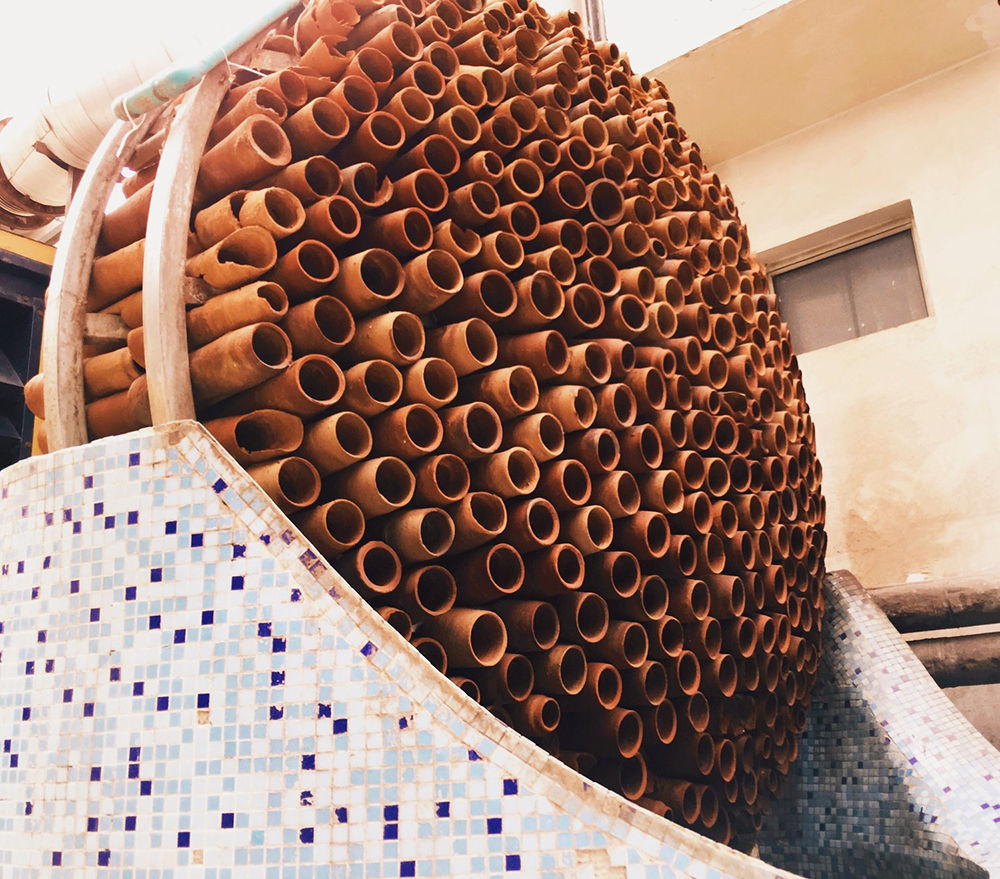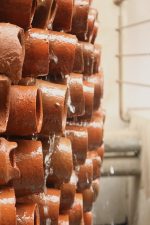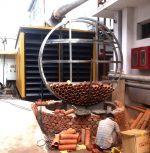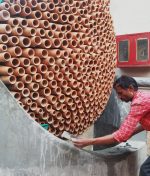“The way we cool our buildings right now is totally wrong,” said Indian architect Monish Siripurapu in a video produced the United Nations’ Environment program. The words are bleak, but arguably true; the electricity and hydrofluorocarbons most modern cooling systems demand ironically warm the planet overall while they cool our conditioned spaces. On top of that, with global temperatures rising and worldwide populations growing, demands for cooling are only increasing. More eco-friendly options are urgently needed, and Siripurapu’s New Delhi–based firm Ant Studio has proposed an affordable, scalable, sustainable, and aesthetically appealing solution to the problem of air conditioning.
Ant Studio’s mission is to combine “art, nature, and technology,” and its temperature-regulating solution is designed to be as much an art installation as a cooling system. The Beehive, as the system’s first iteration is called, was built to ameliorate high-temperature conditions for laborers at the Noida, Uttar Pradesh–based manufacturer Deki Electronics, where generators and other equipment output their own heat, adding to high outdoor temperatures. The Beehive is part of a larger exploration by the firm that leverages terracotta tubes and water as part of a low-energy cooling system.

The Beehive, so-named for its honeycomb-like structure, follows an Indian tradition of using earthenware to cool water. “Traditional architecture has so much wisdom,” said Siripurapu.
The ancient process has been wholly modernized, with tools such as computational fluid dynamics modeling, as well as the addition of low-energy water pumps and, if needed, electric fans. But instead of using fans with the Beehive installation, Ant Studio’s cooling device was placed right in front of the exhaust vents of the diesel generator near where workers at the factory were active. This was able to drop the “scorching” air being expelled from the generator from 122 degrees Fahrenheit to 97 degrees Fahrenheit, while lowering the overall temperature in the area and reportedly consuming 40 percent less energy than other cooling systems, not to mention using no refrigerants.
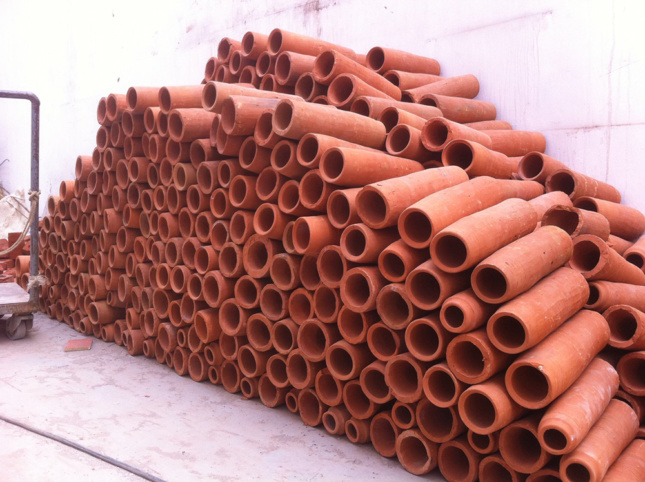
The cooling system consists of arrays of open terracotta cylindrical cones (designed in such a way to maximize surface area and fired at “mid-level” temperatures to maintain the clay’s ability to absorb moisture from the air) over which water is poured. The water, which adheres to the clay, naturally lowers in temperature due to evaporative cooling, which in turn cools the air passing through the tubes. The water can be recycled throughout the system, requiring only infrequent topping off, and biofilms of microalgae that grow on the clay surfaces can actually aid in air purification, according to the firm. Further, as explained in an informational video from the firm, “all materials are recyclable, reusable, or biodegradable.”
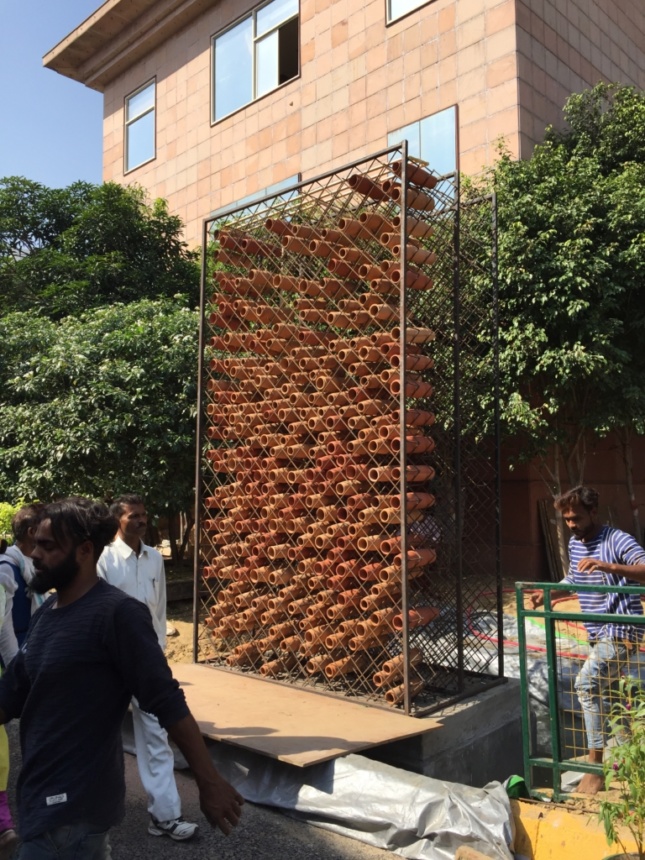
While the Beehive at Dika Electronics took on a particular nature-inspired form, the system can be designed in all manner of shapes and sizes, and is inherently modular, making fabrication and assembling on-site simple.
The overall hope with the project is to devise a system that is “functional and visually appealing at the same time.” Ant Studio views the cooling systems as a work of sculpture as much as a functional tool.
The terracotta cooling systems also could have broader social impact. Besides being a cheap, energy-efficient way to cool factories and public spaces, the craft required to manufacture the tubes creates local employment and skill-building opportunities. It also keeps alive traditional manufacturing techniques that provide a unique, hand-hewn character that industrial cooling systems certainly lack. The clay-based materials also mean a net reduction in embodied energy for these cooling systems.
Ant Studio has also proposed a smaller system which they’re calling ETHER, a cooling device for personal use and small spaces that resembles something like a cross between a Dyson fan and an ancient artifact. Ant Studio’s cooling projects were one of the twelve winners of the United Nations’ Asia-Pacific Low Carbon Lifestyles Challenge and have been nominated for the Clean Energy Challenge from What Design Can Do, a “platform” and series of global conferences on design. Nominated teams are given the “opportunity to improve their project” with the final winners to be announced on March 6.
